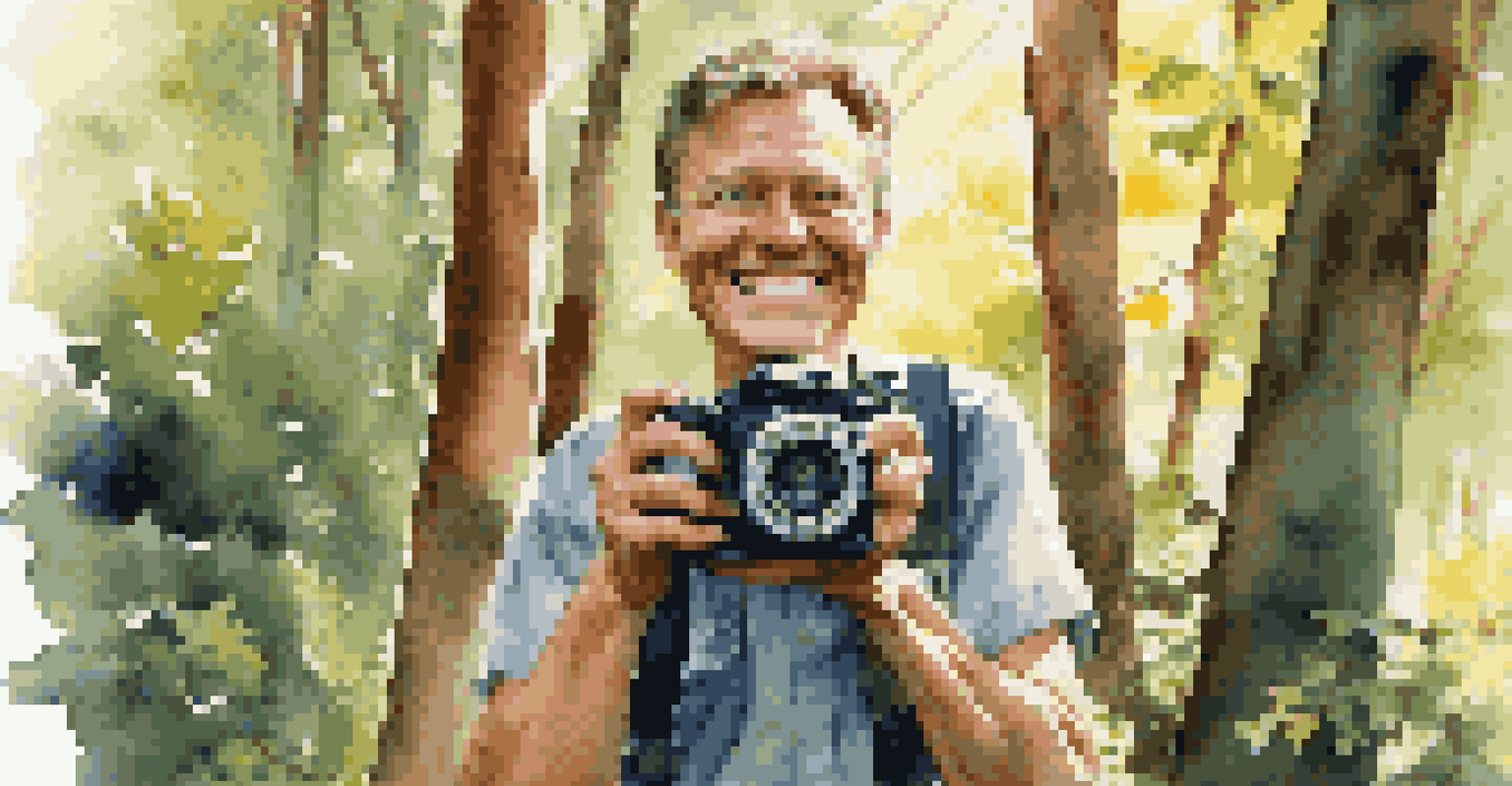How to Create a Strong Portfolio with Edited Photos

Understand Your Audience and Goals for the Portfolio
Before diving into creating your portfolio, it’s essential to identify your target audience. Are you aiming to attract potential clients, employers, or collaborators? Knowing who you’re presenting your work to allows you to tailor your projects and style accordingly.
Your portfolio is a reflection of your creative vision and should evolve as you do.
Next, define your goals. Do you want to showcase your skills in a specific area, like portrait photography, or demonstrate versatility across multiple genres? This clarity will help you select the right pieces to edit and include, ensuring that your portfolio reflects your aspirations.
Lastly, remember that your portfolio is a living document. As you grow and evolve in your craft, so should your portfolio. Regularly revisiting your goals and audience will keep your work relevant and engaging.
Select Your Best Work to Feature in the Portfolio
Choosing which pieces to include in your portfolio can feel daunting. Start by gathering all your edited photos and pick those that represent your best work. Aim for quality over quantity—it's better to showcase a few standout pieces than to overwhelm viewers with too many images.

Consider the variety of your work as well. Including different styles and subjects can demonstrate your versatility and attract a broader audience. For example, if you're a wedding photographer, you might include portraits, candid moments, and venue shots.
Know Your Audience and Goals
Understanding who you are targeting and defining your goals helps tailor your portfolio effectively.
Lastly, don’t shy away from asking for feedback. Sometimes, a fresh pair of eyes can help you see which photos truly shine. Friends, mentors, or fellow photographers can provide valuable insights that refine your selection process.
Edit Your Photos with Consistency and Style
Editing is where your unique style really comes to life. To create a cohesive look throughout your portfolio, establish a consistent editing style that reflects your artistic vision. Whether it's vibrant colors, moody tones, or a minimalist approach, consistency helps to unify your collection.
Creativity takes courage.
Utilize editing software like Adobe Lightroom or Photoshop to enhance your images. Adjust exposure, contrast, and color balance to ensure that each photo is polished and professional. Remember, the goal is to elevate your work without losing the authenticity of the original image.
Additionally, consider creating a few presets for your editing style. This not only speeds up your workflow but also ensures that every photo maintains that signature look, making your portfolio instantly recognizable and memorable.
Organize Your Portfolio for Easy Navigation
Once you’ve selected and edited your photos, think about how to present them effectively. Organizing your portfolio in a logical manner is crucial for keeping viewers engaged. You might choose to categorize your work by theme, style, or even by the project.
For instance, if you specialize in both landscape and portrait photography, consider creating separate sections for each. This allows potential clients or employers to easily find relevant work that aligns with their needs.
Showcase Your Best Work
Prioritizing quality and variety in your selected pieces allows you to present your skills and versatility.
Additionally, ensure your portfolio is easy to navigate online. A clean, user-friendly layout with intuitive navigation will enhance the viewing experience and encourage visitors to explore your work further.
Craft an Engaging About Me Section
Your portfolio isn’t just about the photos; it’s also about you as a creator. An engaging 'About Me' section can help potential clients or employers connect with you on a personal level. Share your background, experiences, and what inspires your work.
You might include anecdotes or stories that highlight your journey in photography. For example, discussing a memorable shoot or the moment you fell in love with photography can create a relatable narrative that resonates with viewers.
Don’t forget to include your contact information and links to your social media or website. This makes it easy for interested parties to reach out and connect with you further.
Utilize Online Platforms to Showcase Your Portfolio
In today’s digital age, having an online presence is essential for showcasing your portfolio. Consider using platforms like Instagram, Behance, or even a personal website to display your work effectively. Each platform offers unique features that can help attract different audiences.
For example, Instagram is great for reaching a wide audience and engaging with followers through stories and posts. On the other hand, a personal website allows for more control over your presentation and layout, making it a perfect spot for a comprehensive portfolio.
Regularly Update Your Portfolio
Consistently refreshing your portfolio ensures it reflects your growth and evolving artistic vision.
Don’t forget to optimize your online portfolio for search engines. Using relevant keywords related to your photography niche can help increase visibility and attract more potential clients or employers.
Regularly Update Your Portfolio for Continued Growth
Creating a strong portfolio is not a one-time task; it’s an ongoing process. As you gain new skills and complete new projects, make it a habit to update your portfolio regularly. This not only keeps your work fresh but also reflects your continuous growth as a photographer.
Periodically reassess your existing pieces as well. If certain photos no longer resonate with your current style or goals, consider replacing them with newer work that better showcases your evolving abilities.

Lastly, set a schedule for these updates—perhaps every few months or after completing significant projects. This proactive approach will ensure your portfolio remains a true representation of your artistic journey.